Created by Susan Stagg-Williams, Dieter Andrew Schweiss, Gavin Sy, and H. Scott Fogler, 1994
Updated by Apeksha Bandi, Gustav Sandborgh, and Arthur Shih, 2013
The Mechanism of Human Respiration in Detail
Human respiration is dependent upon the interaction of acetylcholine
molecules with acetylcholine esterase receptors on the diaphragm muscle.
Each time a person takes a breath, nerve endings that contain "sacks" of
acetylcholine are stimulated. Each sack has roughly 1 x 1014
acetylcholine molecules inside. The sacks move toward the end of the
nerve and eventually strike the wall of the nerve. The force of the
collision causes the sacks to release the acetylcholine molecules into the
neuromuscular junction or synapse.
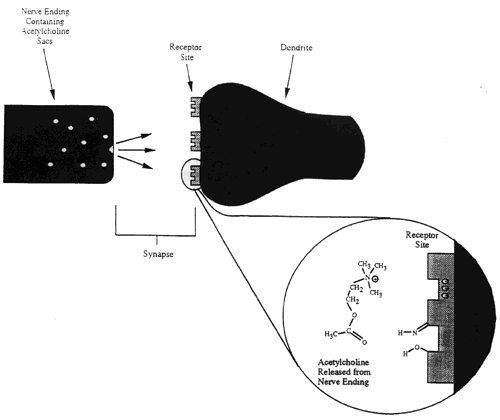
The acetylcholine molecule has a positive nitrogen group which is
attracted to the negative charge of an acetylcholine esterase receptor
site on the diaphragm.
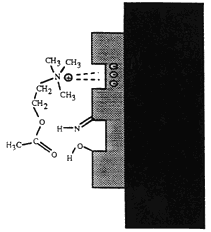
The attraction between the molecule and a receptor site causes a
bridging to occur, and a channel for impulses from the nerve to the muscle
is opened. Each interaction with the receptor site causes the channel to
open for approximately 400 microseconds . The opening of the channel
allows for the transmission of an electrical impulse that stimulates the
contraction of the muscle fiber. Many of these neuromuscular interactions
combine to create a uniform muscle response; i.e., a contraction of the
diaphragm, which is the driving force behind human respiration. Each
breath a human takes is a result of the interaction described above.
The acetylcholine molecule contains an ester group which reacts with the
alcohol group of the receptor site. This reaction is responsible for the
degradation of the acetylcholine molecule.
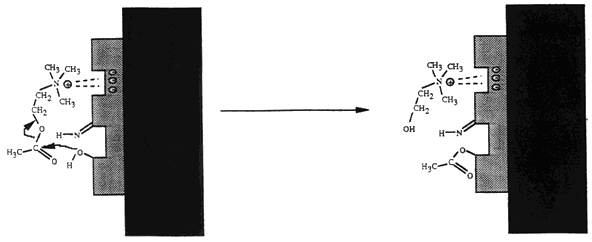
Once the molecule is broken down, a reaction with water occurs and the
receptor site releases the molecules. Once the molecules are released,
the impulse channel closes and the receptor site is free to interact with
another acetylcholine molecule.
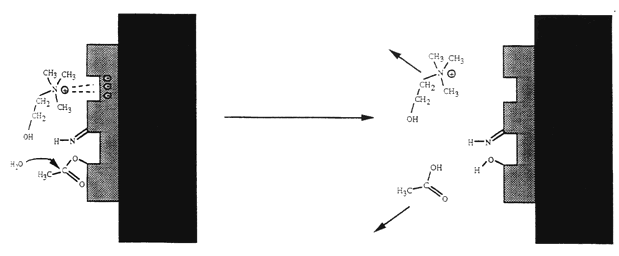
The molecules that are released from the receptor site are then used by
the body to form new acetylcholine molecules that are again stored in the
sacks in the nerve ending.
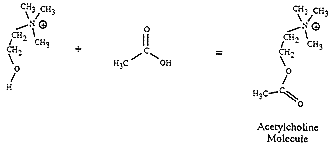
Since the body produces the acetylcholine molecule, the process is cyclic
in nature and self-sustaining. The process will continue to occur until
something prohibits the interaction with the receptor site and stops the
formation of the acetylcholine molecule.